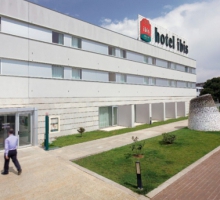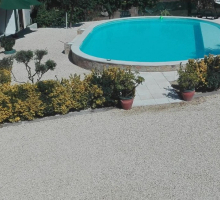The origin of this bridge goes back to the Roman Empire, as suggested by the presence of characteristic 'padded’ stones in its foundation.
The bridge integrated the Porto (Cale) to Braga (Bracara Augusta) section of the Via XVI of the Antonine Itinerary in the 1st or 2nd century AD.
This road connected the Roman provinces of Lusitania and Callaecia, from Lisbon (Olisipo), through other cities like Santarém (Scallabis) and Coimbra (Aeminium) to Braga. The identification of a milestone in S. Mamede de Infesta, dedicated to the Emperor Hadrian (117-138 AD) also confirms the antiquity of this pathway, which still retains, in some parts, the significant name of “Old Road”.
In 1842, a new bridge was built alongside the old road, because of the increasing traffic and the road was also redesigned.
This bridge as seen today is a 20th century reconstruction.
Location: Matosinhos
The bridge integrated the Porto (Cale) to Braga (Bracara Augusta) section of the Via XVI of the Antonine Itinerary in the 1st or 2nd century AD.
This road connected the Roman provinces of Lusitania and Callaecia, from Lisbon (Olisipo), through other cities like Santarém (Scallabis) and Coimbra (Aeminium) to Braga. The identification of a milestone in S. Mamede de Infesta, dedicated to the Emperor Hadrian (117-138 AD) also confirms the antiquity of this pathway, which still retains, in some parts, the significant name of “Old Road”.
In 1842, a new bridge was built alongside the old road, because of the increasing traffic and the road was also redesigned.
This bridge as seen today is a 20th century reconstruction.
Location: Matosinhos





